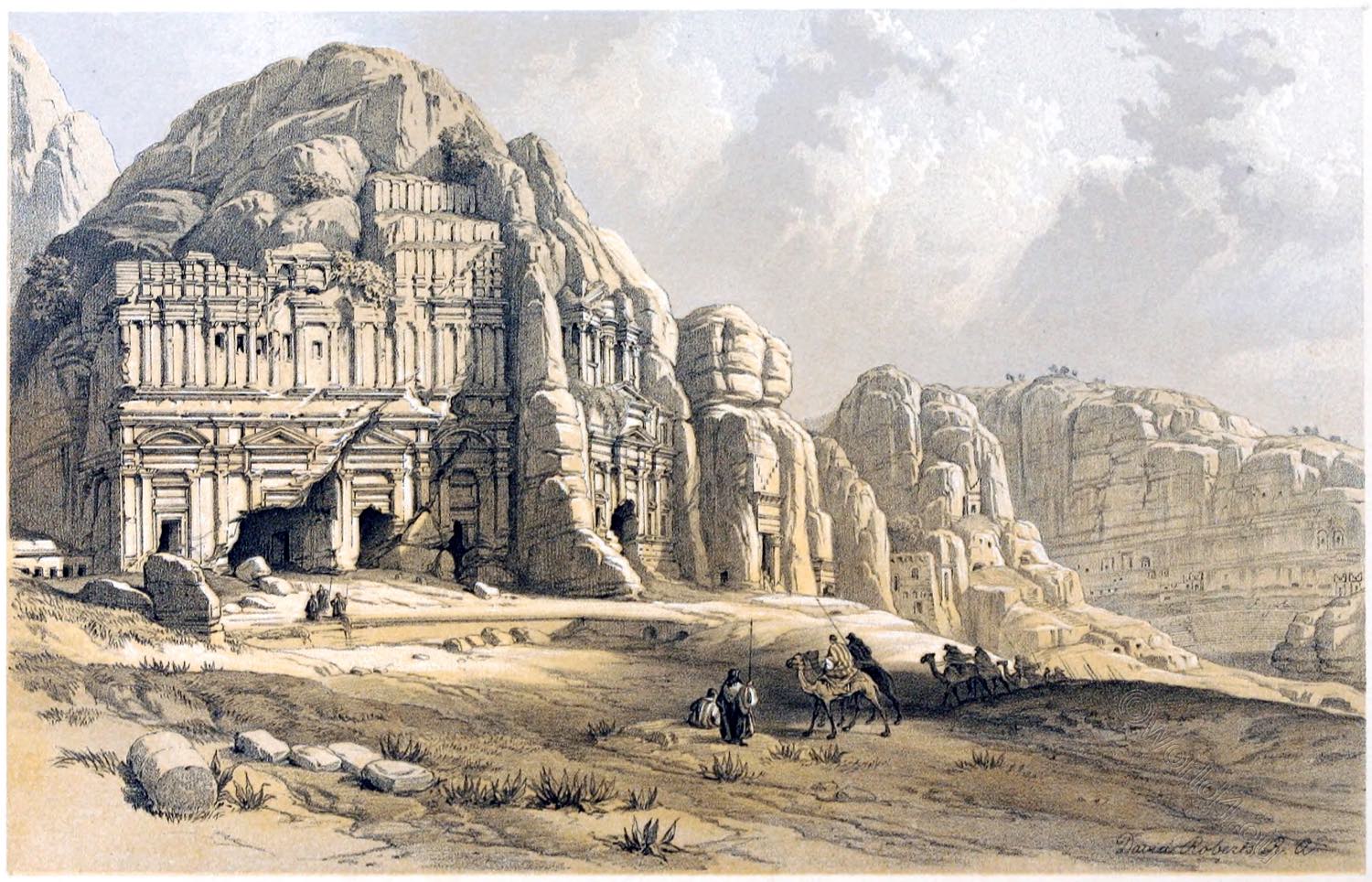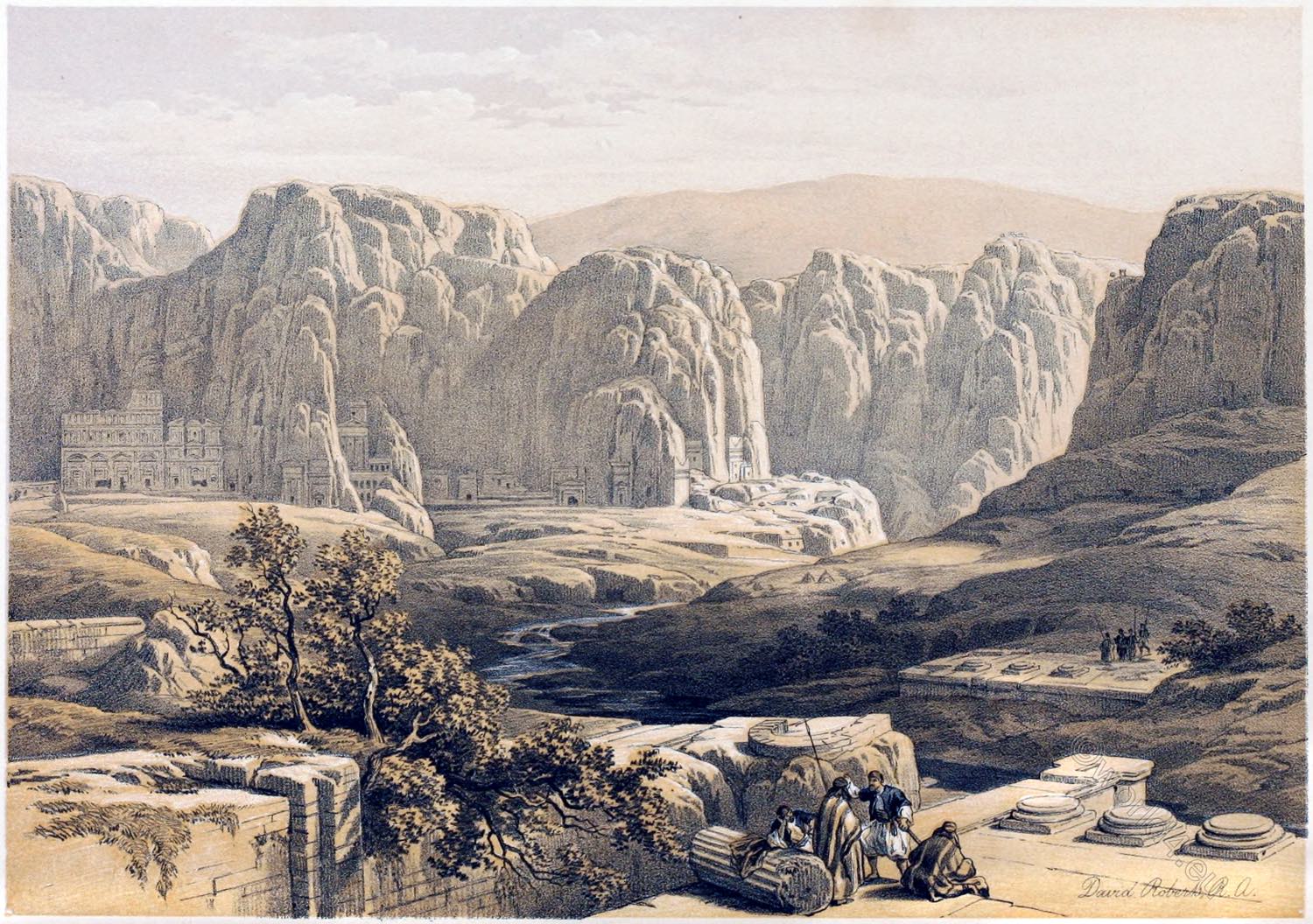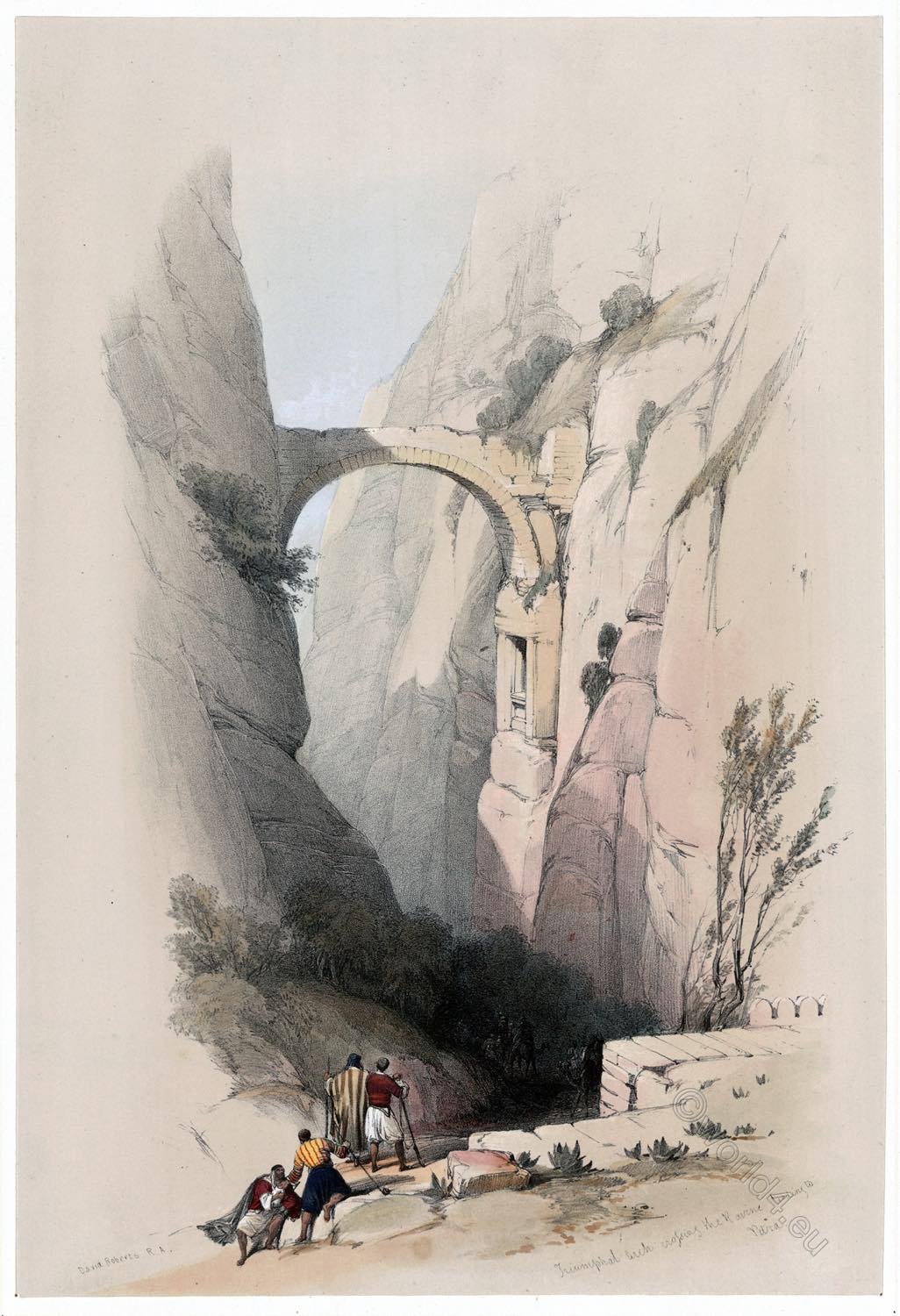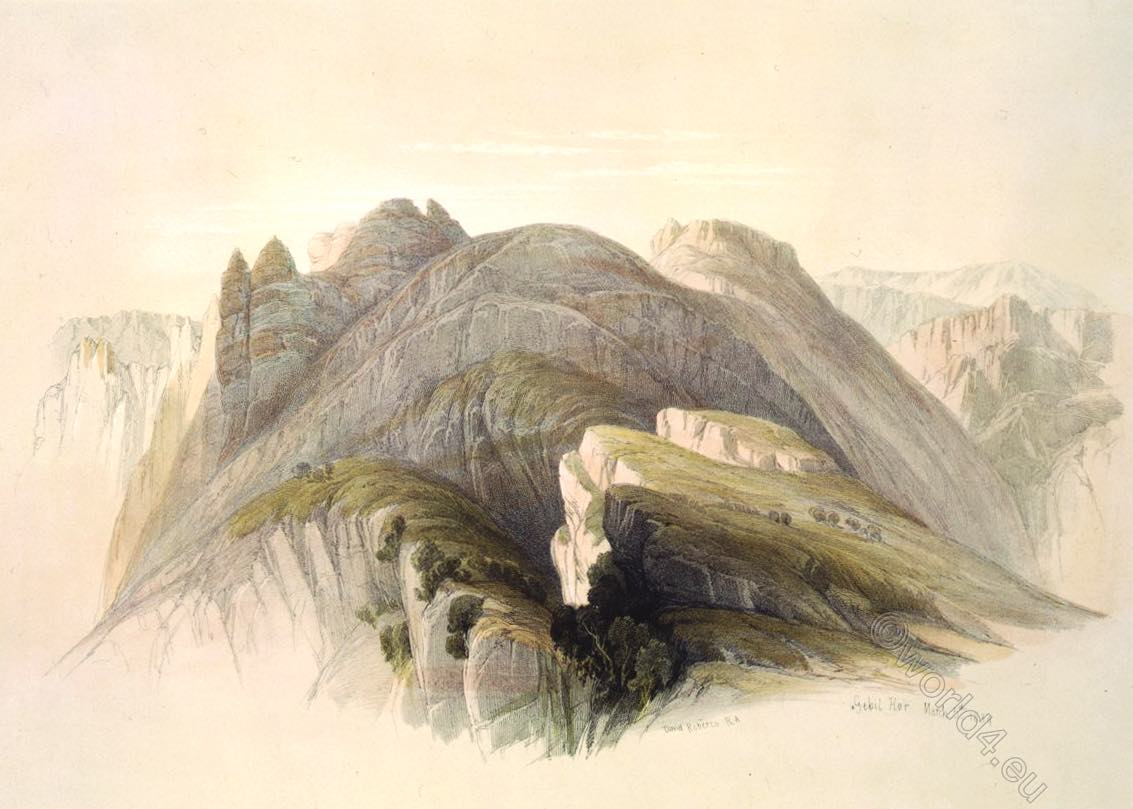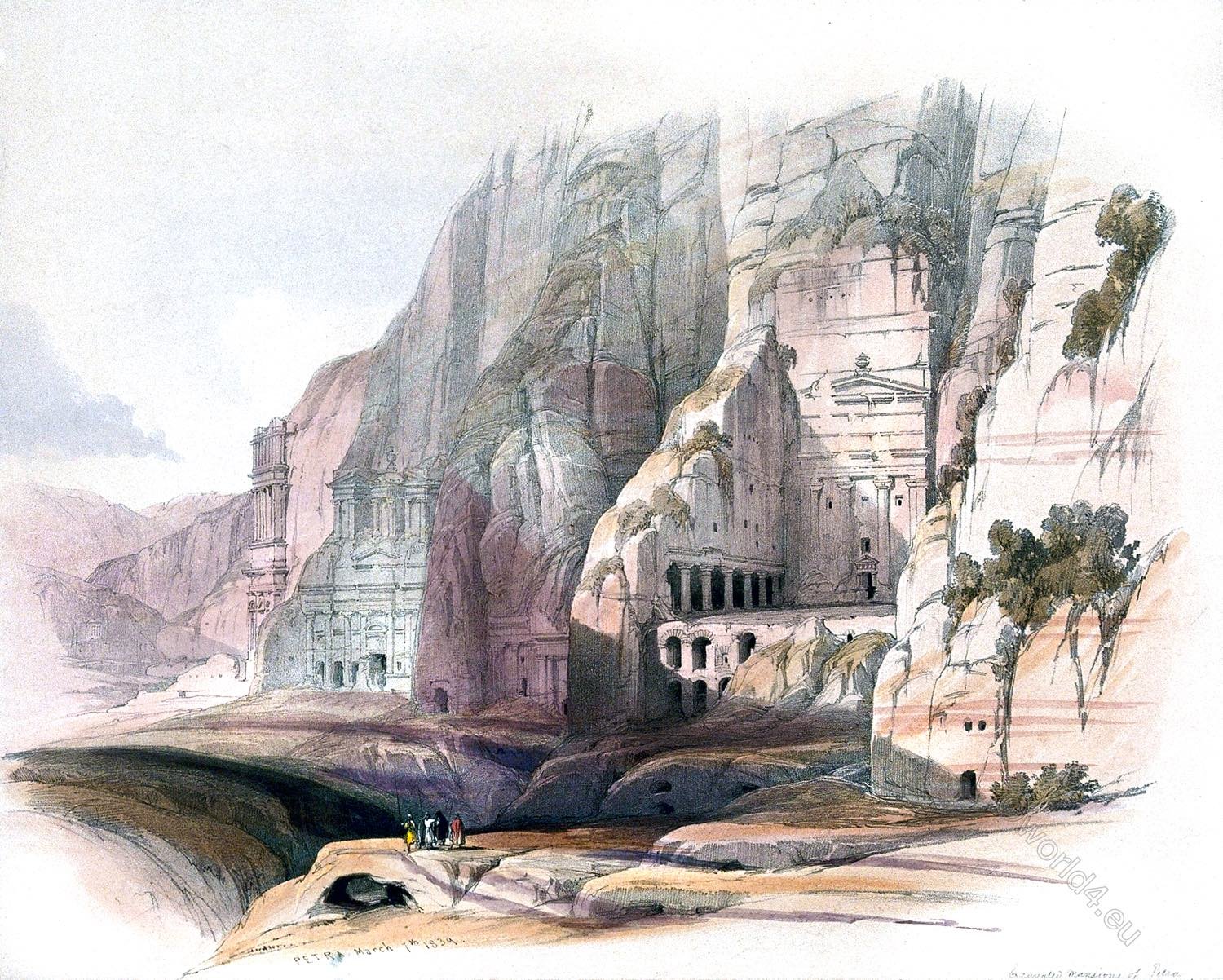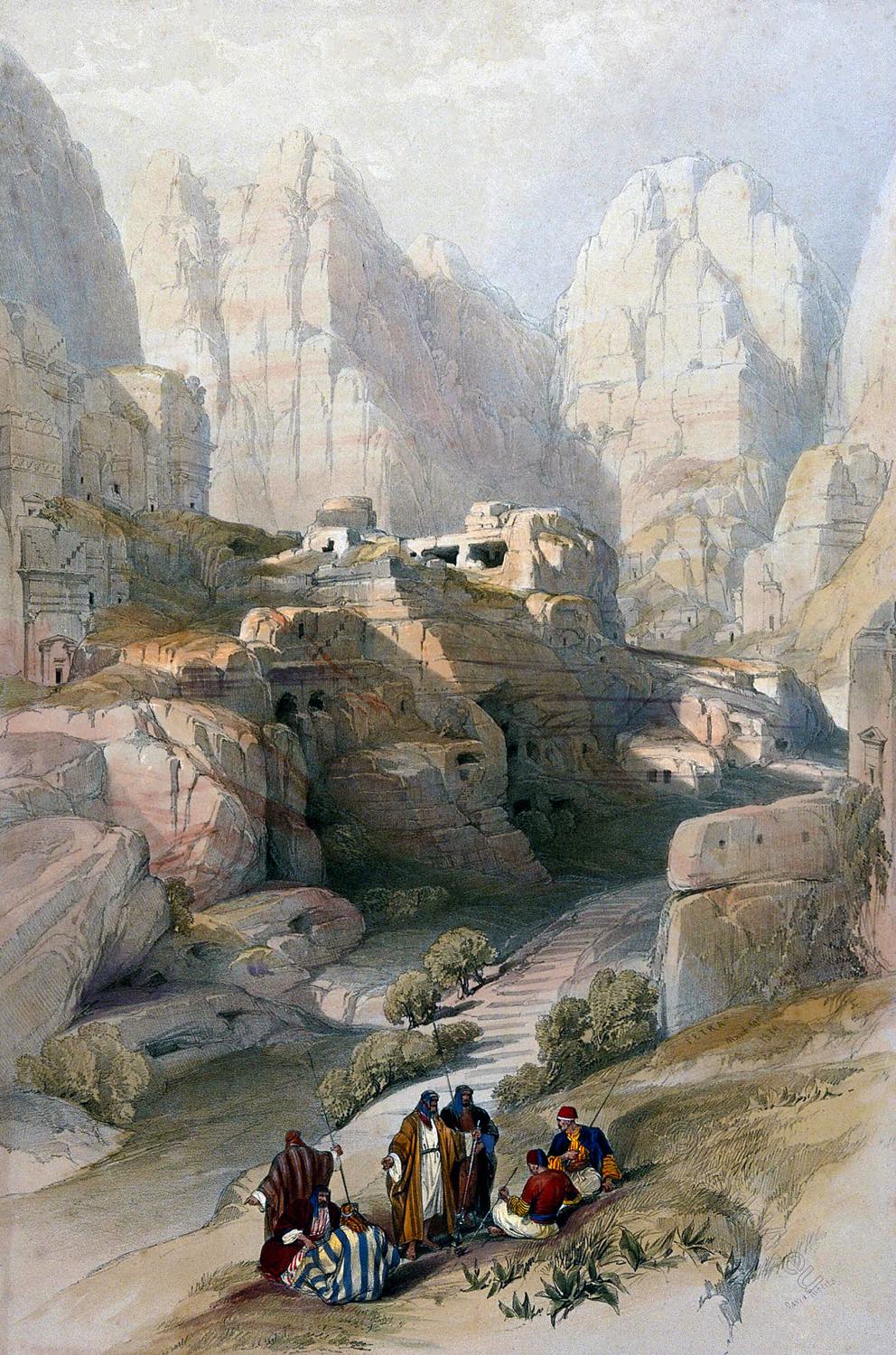
THE RAVINE
by David Roberts.
This view is taken from the Theatre, and represents the Excavations in the opposite cliffs; and the continuation of the chief eastern entrance to the City. The face of the rock is perforated in every accessible spot; and the prominent masses seem to have borne towers, and other defences of the pass. The bottom was flagged with large stones, not unlike the great Roman ways. But their level is now much broken up.
Laborde conceiving that these excavations are tombs, remarks on the singular neighbourhood of this scene of mortality to the animation of the Theatre. “What a strange habit of mind,” he observes, “the people of Petra must have possessed, thus to familiarise themselves so constantly to the idea of Death; as Mithridates (!) accustomed himself to poison, in order to become insensible to its effects.” 1)
Yet it is by no means clear, that any of these excavations were originally meant for tombs. For the excavations in the acknowledged Cemetery, outside the City, are not merely on a much smaller scale, but of a different form, being generally niches, cut into the shape of a coffin, and frequently in pairs, as if for members of the same family, and also frequently covered with mould and verdure; in all those points resembling the tombs surrounding Jerusalem; while within the Ravine they exhibit no imitation of the shape of the coffin, no verdure, nor any other covering than dust, nor that dust any other trace than those of the serpent and the lizard. 2)
The picturesque effect of the scene is less open to disputation. The rocks presents an endless variety of colours, varying from crimson to the softest rose, and sometimes verging into orange and yellow; those are sometimes exhibited in broad stripes, changing and blending into each other like the hues of shot silk. But the general contrast of the cliffs with the sculptures singularly strikes the eye.
Nature in her most savage wildness is brought into immediate connexion with art, sometimes capricious and romantic, but often graceful, and always new. All above is a succession of vast crags, battlements shaped by time and tempest, and sheets of colouring, which time and tempest may have only brightened.
All below is a succession of colonnades, porticoes, and corridors; some approaching the purity of the Greek, and others mingling the styles of East and West some minute and delicate, others broad, bold, and colossal; and all displayed with the rich effect of an Eastern climate, and in positions affording every advantage of light and shade.
In those examples of every style two are predominant, the Egyptian and the Roman-Greek; the former visible in the frequent recurrence of truncated pyramidal forms, and the slightly inclined fronts and sides of the more massive monuments; the latter in the general floridness of decoration in the remaining columns, architraves, and bas-reliefs of the ruins which cover the site of the city, and in the principal sculptures of the rocks.
Those styles may be accounted for, by the intercourse of a people of opulent traders with the chief sources of ancient commerce. Its connexion with the Egyptian traffic naturally determined it to the solid and grave dignity of the architecture of Memphis and Thebes. Its connexion with the Greek Isles, and with Italy, through its subjugation by the Caesars, would as naturally determine its adoption of the elegance of Greece, and the imperial exuberance of Rome.
The geology of the Mountains of Edom offers a wide field. Argillaceous rock forms the base, lofty masses of porphyry constitute the body, and long limestone ridges extend above all. The porphyry cliffs average 2000 feet above the Arabah. Wady Mousa is about the same height above it, and the limestone ridges may rise 3000 feet. The whole breadth of the Mountain tract between the Arabah and the Desert is under twenty geographical miles. 3)
1) Laborde. 2) Roberts’s Journal. 3) Biblical Researches, ii. 551.
Source: The Holy Land, Syria, Idumea, Arabia, Egypt, & Nubia, by David Roberts (British, 1796-1864), George Croly, William Brockedon. London: Lithographed, printed and published by Day & Son, lithographers to the Queen. Cate Street, Lincoln’s Inn Fields, 1855.

